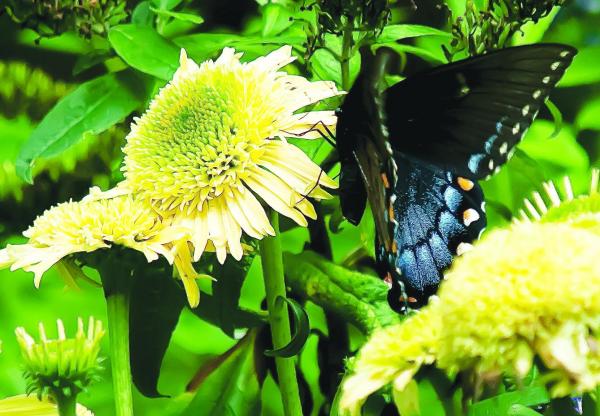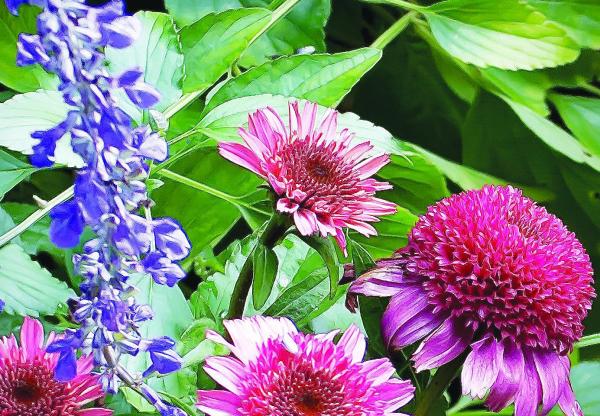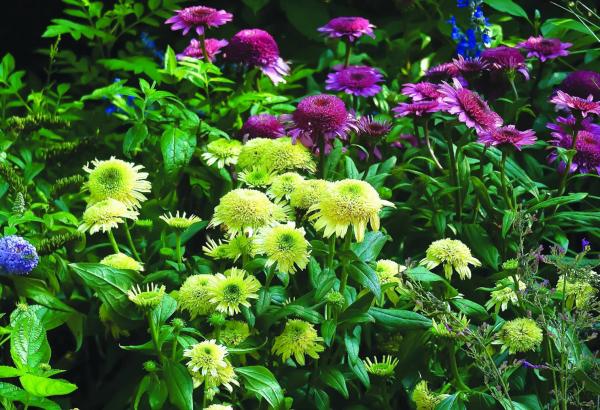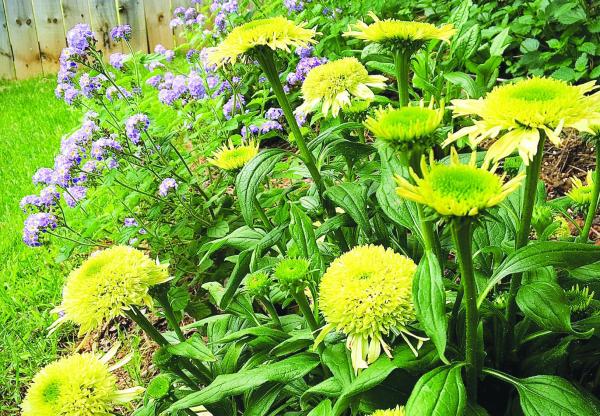GARDENING
Gardeners, I am here to tell you that you must get double coded. You’re probably thinking there must be a security breach affecting the landscape, but I assure you, it is a cup cake. At least, it looks like a cupcake, and there are two colors. The names Butter Pecan and Raspberry Beret sound good enough to eat, but I assure you it is as though these new coneflowers were on the dessert menu for the landscape.
As you might be guessing, Double Coded is the name for two new hybrid echinacea making their debut as part of the Color Coded series, one of the hottest groups of coneflowers being introduced by Proven Winners. Double Coded obviously tells you these are double flowered varieties and I promise you will not be disappointed. That is unless you let your neighbors beat you to the checkout line.
The Double Coded Butter Pecan is called melon in its color description. It shows off different shades of yellow as it goes through the aging process, leaning toward a rich pastel. The Double Coded Raspberry Beret yields various shades of pink, finishing with a rich vibrant raspberry color.
They both are obviously chock full of native DNA and reach about 20 inches in height. Double Coded Butter Pecan spreads 16 to 18 inches while Double Coded Raspberry Beret is slightly larger spreading up to 24 inches. To be honest, I gawk at them every time I walk by. I am just amazed at their beauty and feel I have only just begun to tap into the garden combination possibilities.
I had more Double Coded Butter Pecan plants to try. My first pairing of these was with this year’s hot new Augusta Lavender heliotrope. This is a match made in heaven, I assure you. The color contrast is perfect for those that have a slight leaning toward pastels. The yellow orange centers of August Lavender echo the Butter Pecan to perfection.
In another area of the landscape, I paired Butter Pecan and Raspberry Beret together in an informal drift and in front of Rockin Playin the Blues salvia. Pugster Amethyst buddleia is to the side and also in close proximity. The Butter Pecan and Raspberry Beret have a natural attraction for each other, and the pairing creates an automatic, no-fail marriage design.
I am always watching to see if pollinators go to certain blooms and especially tight double flowered selections like these Double Coded coneflowers. I am happy to report that even though it might appear to be more work on the pollinators, bees and butterflies like Eastern Tiger Swallowtails know how to get the job done.
To me, the echinacea, our humble purple coneflower has been transformed into the ultimate collector plant. I wish I could grow them all. Of course, it would take a spread as big as South Fork to accommodate them. So, for now I would suggest putting the Color Coded and Double Coded varieties on your list.
Whenever you decide to plant, choose a site in full sun for best flower performance. The soil need not be luxuriantly fertile. Space your Color Coded and Double Coded echinacea plants 16 to 20-inches apart in an informal drift or sweep. Partnership opportunities with these new coneflowers is unlimited. They will rock the cottage garden, pollinator garden and today’s modern perennial garden. They are recommended for zones 4-8. Based on how coneflowers did for me in Savannah, I feel sure they can also stretch to zone 9a.
There has never been a time so exciting to be a gardener and next year’s new introductions will keep us all enthralled with both our landscape and containers.






